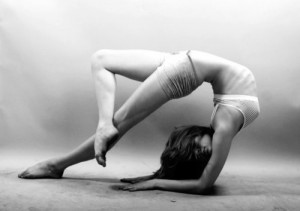 Backbending is the heart of yoga. When I was doing ashtanga I was taught that the first series was designed to build strength to prepare for the deep backbends of the second series. This always made intuitive sense to me.
Backbending is the heart of yoga. When I was doing ashtanga I was taught that the first series was designed to build strength to prepare for the deep backbends of the second series. This always made intuitive sense to me.
If you look at yoga as an energy practice, backbends have the capacity to create some serious opening and students would be well advised to have a solid core to work with. A backbend is meant to be a spinal extension. I think that gets lost in the name of the pose. While the back does bend in the pose it needs to bend from an equal extension at the front and back of the spine. It is all too easy to do backbends that only extend the front portion of the body and spine while compressing the lower back in a compromising fashion.
There are only three muscles connecting the arms and legs to the spine. The psoas major and the piriformis connect the legs to the spine and the latissimus dorsi connects the arm to the spine and the pelvis. The ability to lengthen the spine correctly in a backbend is dependent on these three muscles, and a choice few others, to be aligned and functioning properly.
The abdominal muscles at the front of the body (though they do wrap towards the back) function to limit the extension of the spine. But if your core muscles don’t have the tone do do that you might be compromising your spine.
Students have to check in with their back as they are doing poses like wheel. Do the muscles of the back lengthen into the pose or do the muscles of the back compress or shorten? It is of the utmost importance that when you bend your back in yoga, the muscles of the spine and back lengthen.
The number of injuries that students suffer in backbends is alarming. In the next few posts, I’ll cover some alignment issues and common injuries that result from backbending improperly in your yoga practice.
***
